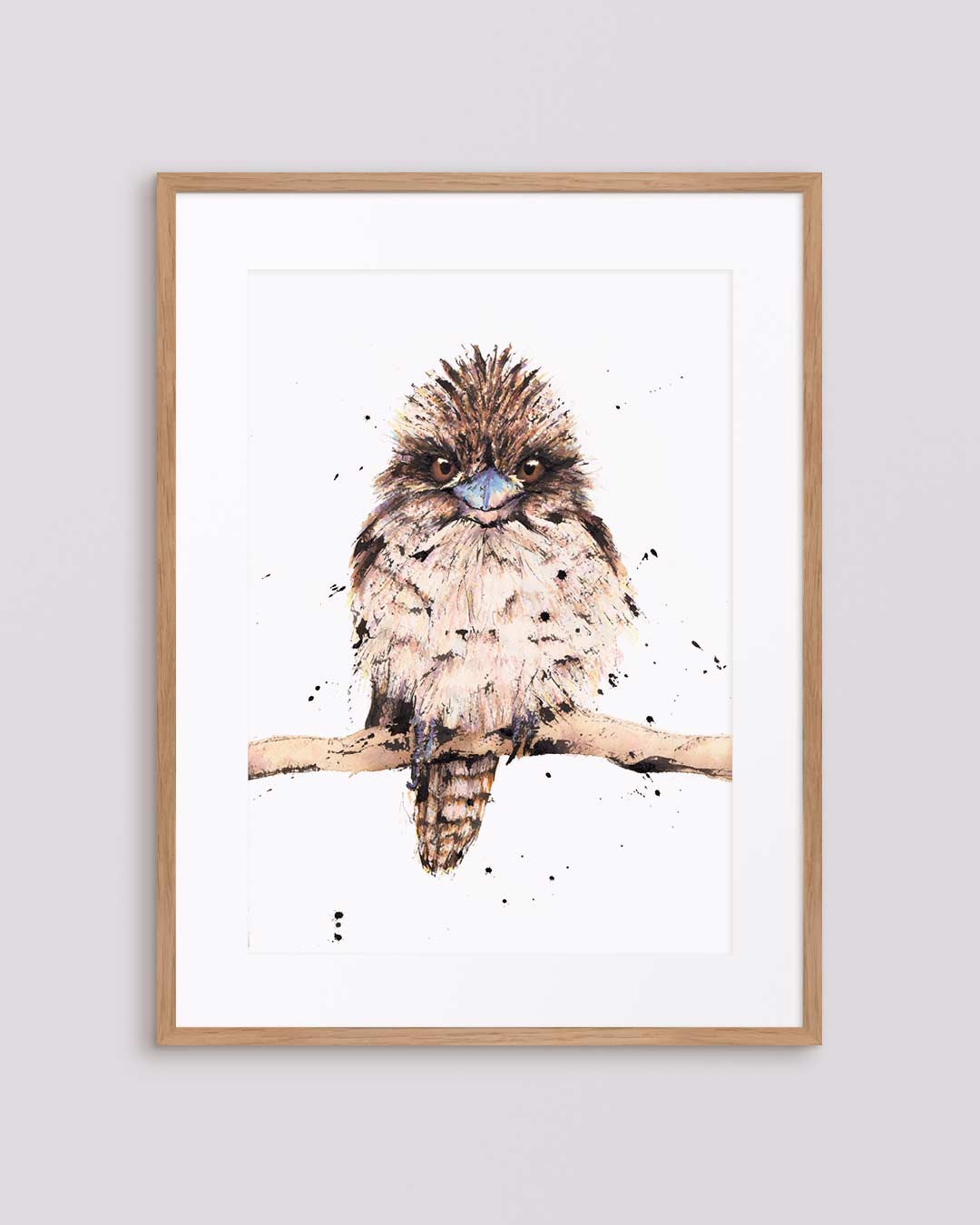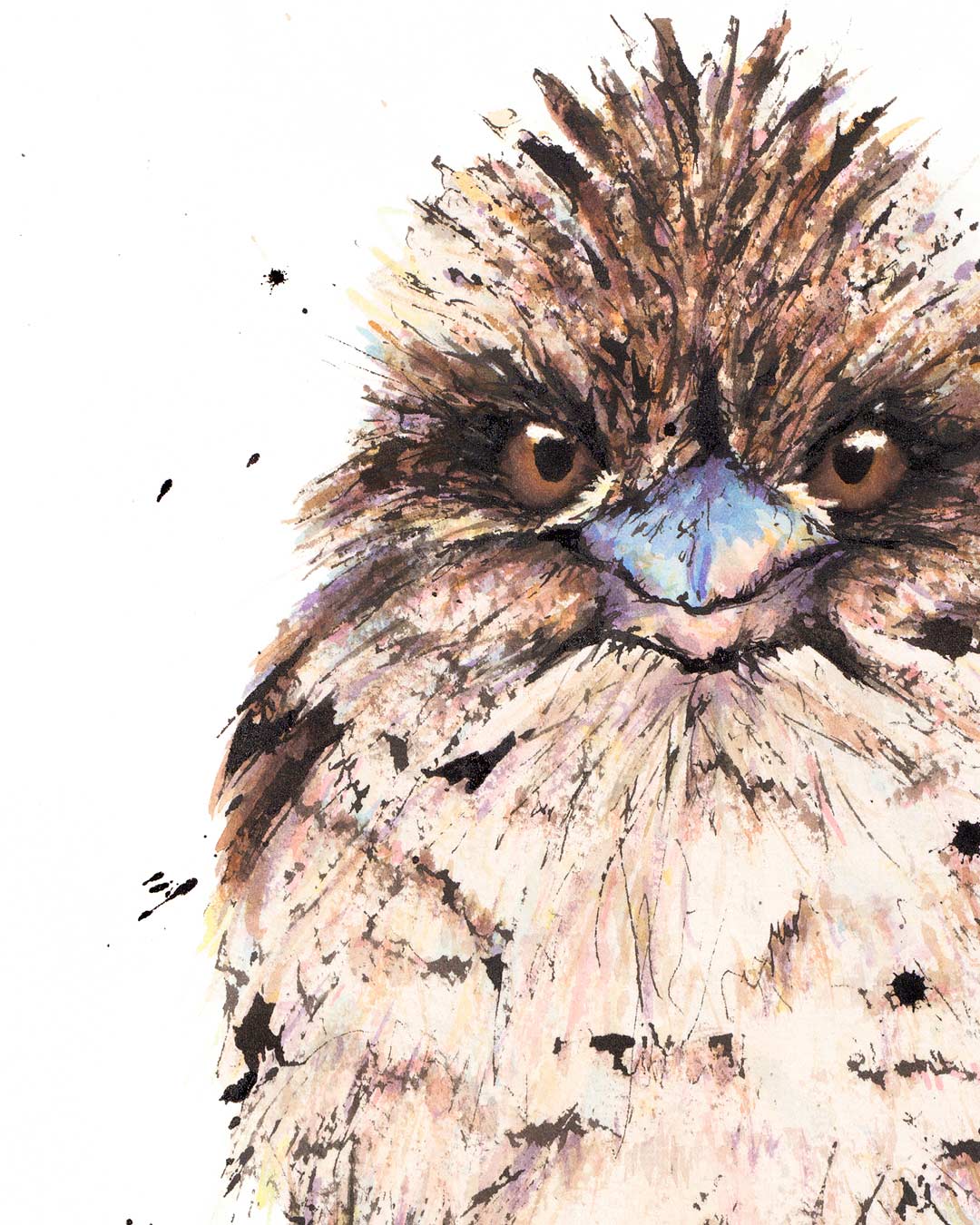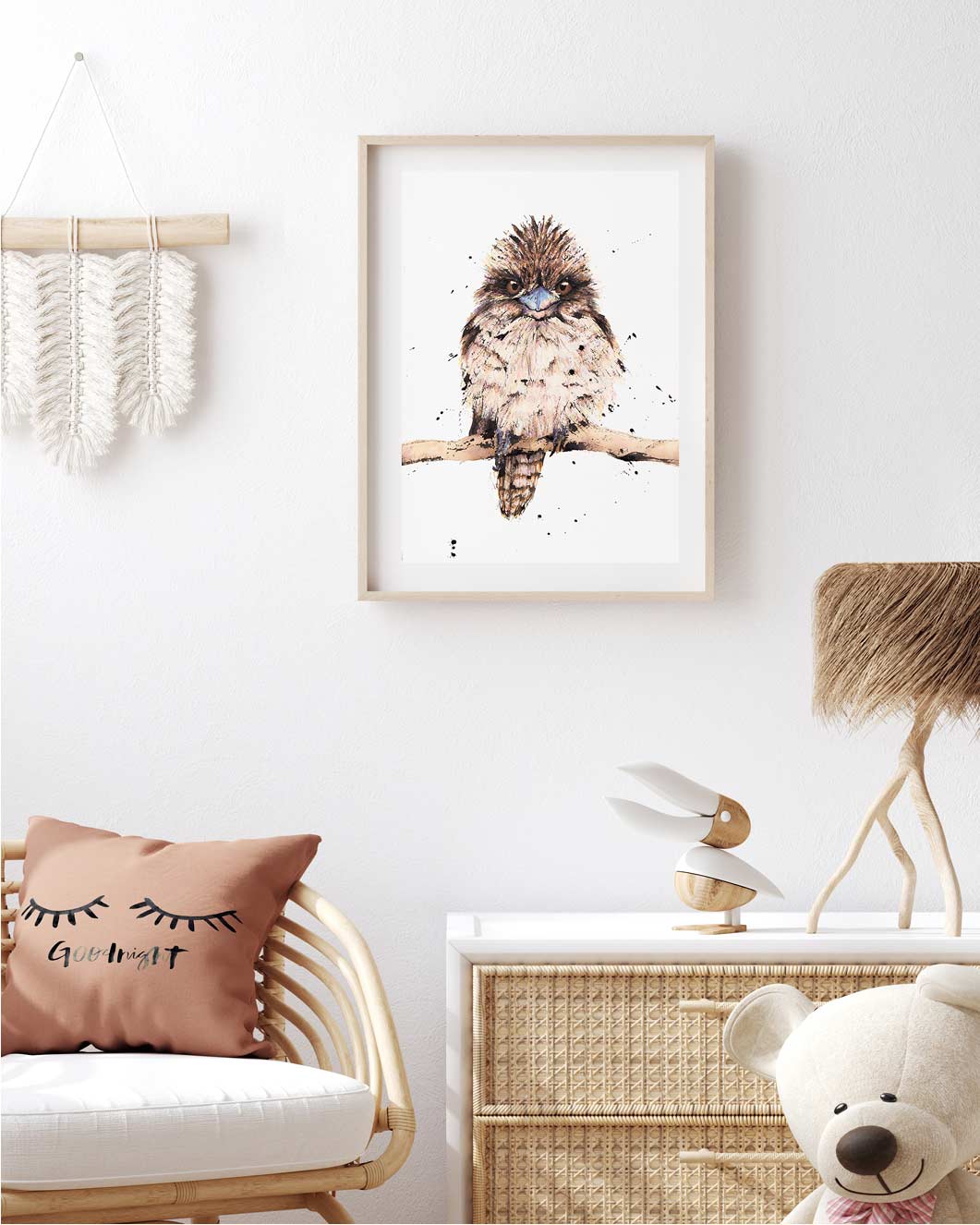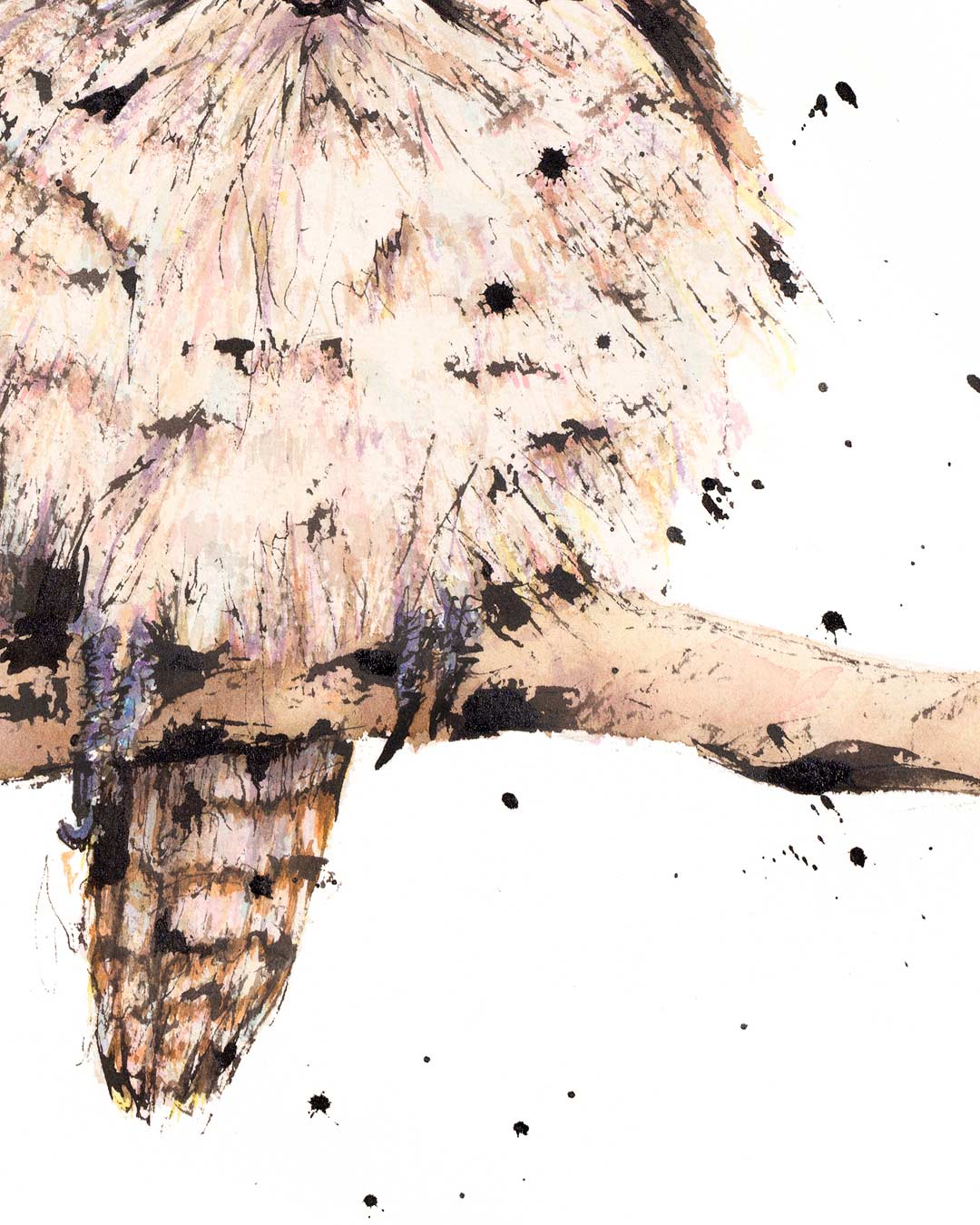Shannon Dwyer Artist
Fluffybum the baby Kookaburra, Fine Art Print
Fluffybum the baby Kookaburra, Fine Art Print
Fine Art Giclée Print
Couldn't load pickup availability
Meet: Fluffybum, the baby kookaburra who has serious fluff-factor and more than just a touch of adorable!
“It’s so fluffy, I’m gonna die!”
About this bird:
The Laughing Kookaburra (aka, ‘bushman’s alarm clock’ or ‘the laughing jackass’) is native to eastern Australia, with introduced populations in Tasmania, Flinders Island, Kangaroo Island and New Zealand. Its name comes from the traditional, Pama-Nyungan language of Aboriginal Wiradjuri people, ‘guuguubarra’. It is the largest member of the kingfisher family in the world, however, its diet is more like a bird of prey - exploiting a variety of food sources, including rodents, insects, reptiles, birds and snakes up to 1m long! They grab them behind the head and smack them on the ground, sometimes dropping them from midair for tenderizing! Parents often give their chicks small snakes for practice. They may be skilled hunters but kookaburras still have to worry about becoming the meal of large owls, eagles, hawks and falcons (and predators such as introduced foxes and cats). Its famous ‘laugh’ can be heard at any time of the day but is most often at dawn and dusk, to signal their territory to other birds. According to one indigenous Australian legend, the laughing kookaburra’s song is a signal for the sky people to light the sun each morning. They live in almost any area with trees big enough to contain their nests and open patches with sufficient hunting areas. Laughing kookaburras are a common sight in suburban gardens and urban settings and are so tame that they will often eat out of a person’s hand. It is not uncommon for kookaburras to snatch food out of people’s hands (or BBQ) without warning, by swooping in from a distance. They live in families, with siblings remaining in the family until they are old enough to look after themselves, also acting as helpers during the breeding season. Kookaburras stay with their mate for life and will use the same nest hole in a tree trunk or arboreal termite nest year after year. Conservation Status: Least Concern.
Share





Each fine art giclée print is hand-signed by Shannon.
All Prints are made from an original painting that has been professionally ‘captured’ to ensure all of its finer details remain - including the beautifully subtle texture in the paper.
Each fine art giclée print is hand-signed by Shannon.
All Prints are made from an original painting that has been professionally ‘captured’ to ensure all of its finer details remain - including the beautifully subtle texture in the paper.

Paper: Premium-grade bright white 315gsm acid-free paper, with a beautifully subtle textured finish
A5 Fine Art Print size comes mounted on A4 matboard, ready for framing.
Custom sizing available on request.
Inks: Printed with archival pigment inks.
Postage: Prints may be posted flat or rolled in acid-free tissue paper, within a postage tube.
What is a Giclée?
Giclée is a printing process using high-quality digital files, archival-grade pigments and acid free media resulting in a fade-free image which achieves a seemingly “dot-less” imaging technology (which varies from traditional fine art printing which typically relies on screen pattern dots to reproduce full-range colour halftones). The Giclée process enables reproduction on virtually the same media as the original artwork.
Paper: Premium-grade bright white 315gsm acid-free paper, with a beautifully subtle textured finish
A5 Fine Art Print size comes mounted on A4 matboard, ready for framing.
Custom sizing available on request.
Inks: Printed with archival pigment inks.
Postage: Prints may be posted flat or rolled in acid-free tissue paper, within a postage tube.
What is a Giclée?
Giclée is a printing process using high-quality digital files, archival-grade pigments and acid free media resulting in a fade-free image which achieves a seemingly “dot-less” imaging technology (which varies from traditional fine art printing which typically relies on screen pattern dots to reproduce full-range colour halftones). The Giclée process enables reproduction on virtually the same media as the original artwork.



